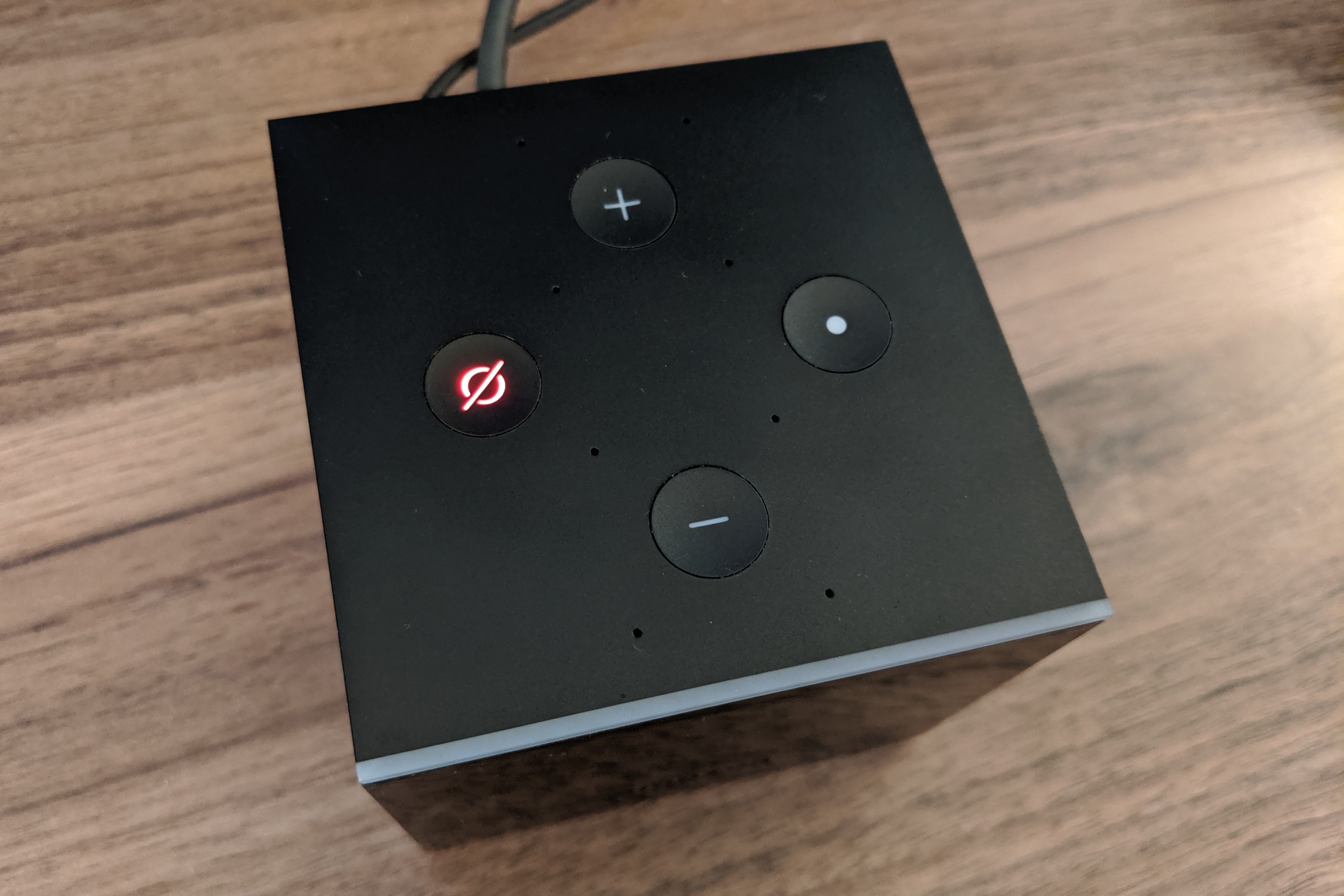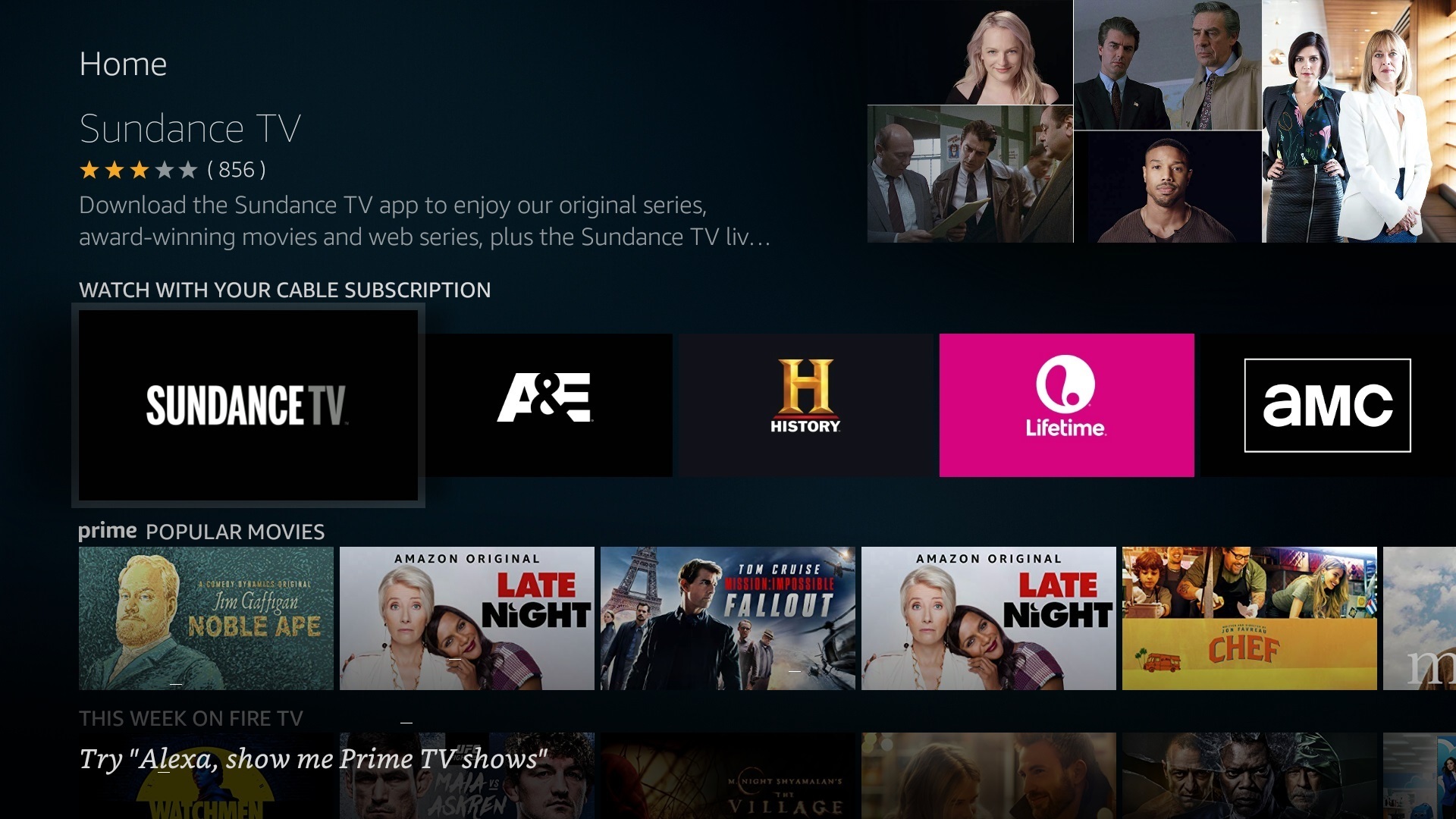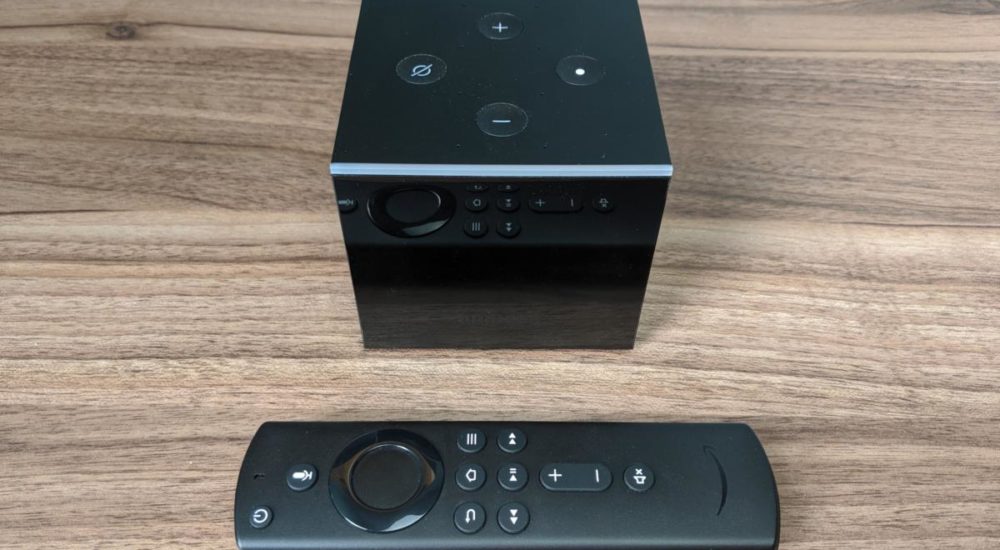At its best, Amazon’s Fire TV Cube feels like the future.
With this $120 streaming box, which has built-in microphones for Amazon’s Alexa voice assistant, you can launch videos, tune to live TV channels, play music, and control your TV’s volume without ever touching a remote control. Of course, a regular remote is still included, but saying “Alexa, tune to ESPN” is often faster and easier than thumbing around with on-screen menus.
Even so, the second-generation Fire TV Cube’s futuristic appeal is marred by some present-day limitations, including second-rate search capabilities, apps that don’t fully support voice commands, and Alexa’s occasional tendency to wake up when she’s not supposed to. Besides, if you’re uneasy about putting an Amazon listening device in your living room, you probably won’t care about the magical voice-control moments it enables.
The new Fire TV Cube does have some other perks beyond voice control, including faster performance than any Fire TV device to date, but it’s also much pricier than the $50 Fire TV 4K, which is sufficiently fast already and supports all the same 4K HDR and surround sound formats. The Fire TV Cube is only worth the extra money if you’ve bought into Amazon’s vision of a voice-controlled living room.
Alexa’s ups and downs
Like the original Fire TV Cube from mid-2018, the new version is a plastic streaming TV box that measures about 3.4 cubic inches and has an array of far-field microphones built in. When you say “Alexa,” a light strip on the front of the box turns blue, signaling that it’s listening for a voice command.

From there, Alexa can launch apps, pause videos, and control TV functions such as volume and power through the Cube’s built-in IR emitters. You can also use the Cube like an Amazon Echo speaker to play music, hear the weather forecast, check sports scores, look up TV listings, and so on. The Fire TV Cube can control smart home devices through Alexa as well, and it can show live feeds from supported security cameras.
With certain streaming apps, Alexa goes even further. You can load specific movies and shows by name in apps like Netflix, Amazon Prime, HBO Now, and Hulu, and you can launch live TV channels through PlayStation Vue, Hulu with Live TV, and Philo. With an Amazon Fire TV Recast DVR, Alexa can even tune to over-the-air channels and play your recordings.

Using Alexa with these integrated apps is fantastic, especially for quick live-TV channel changes and volume adjustments. And if your TV is hooked up to a decent soundbar or A/V system, the Fire TV Cube becomes a great way to play music. You can even make the Fire TV Cube part of a multi-room audio group in the Alexa app, so your TV plays music in sync with other Alexa devices around the house.
Still, not all apps offer full Alexa integration, so you can’t always launch content directly, or fast forward and rewind by voice. Amazon doesn’t publish a complete list of apps that fully support Alexa either, so you’ll need to perform some frustrating trial-and-error tests to discover what works.

This was a problem with the original Fire TV Cube as well, but Amazon now offers a workaround: By saying things like “Alexa, go left” or “Alexa, select,” you can simulate the remote control and navigate through apps that don’t support voice commands natively. Aside from being a decent fallback for when other voice commands fail, this could be a game-changing feature for users with motor impairments.
A note about privacy
The main caveat with the Fire TV Cube is that it requires you to put always-listening microphones in your living room. To be clear, Amazon does not collect a record of everything you say—like other Alexa devices, the Cube uses an offline process to listen specifically for “Alexa,” and only sends audio to Amazon’s servers when it hears that wake word—but the concept can still be unnerving.
It doesn’t help that Alexa’s default settings allow humans to review voice recordings for accuracy and store those recordings in perpetuity. Amazon puts the burden on users to change those settings, and offers no option to auto-delete recordings immediately. And because the Fire TV Cube occasionally mishears “Alexa” among background chatter, it can sometimes record audio when it shouldn’t. While you can always disable Alexa by pressing a button on top of the Fire TV Cube, doing so on a permanent basis undercuts the main reason for having this device in the first place.

Bringing speedy back
Alexa aside, the Fire TV Cube does have the advantage of being an extremely speedy streaming box by Amazon’s standards. With a six-core processor, it’s the fastest device Amazon has released since the second-generation Fire TV box, which came out in 2015.
The main purpose of that extra oomph is to take certain voice commands offline, so you can navigate through the Fire TV’s menus faster. But as a side benefit, it also improves app loading times. In my tests, Playstation Vue loaded in nine seconds on the Fire TV Cube, versus 16 seconds on the Fire TV Stick 4K. The Cube also loaded Sling TV three seconds faster and Pluto TV six seconds faster, and it seemed to load Netflix instantly, versus a 15-second load time on the Fire TV Stick 4K.
The Fire TV Cube also has 2GB of RAM, up from 1.5GB on the Fire TV Stick. In practice, this means you can switch between four or five recent apps without needing to reload them from scratch, versus two or three recent apps on the Fire TV Stick 4K.
Beyond improving raw performance, though, the Fire TV Cube’s extra power doesn’t translate to additional non-Alexa features, which is kind of a shame. There’s still no fast app-switching menu like you get on the Apple TV 4K or Nvidia Shield TV, and I’ve yet to encounter any apps that offer split-screen viewing, akin to PlayStation Vue’s multi-view mode on Apple TV and PlayStation 4.
On the plus side, the Fire TV Cube supports 4K HDR video in HDR10, HDR10+, Dolby Vision, and HLG formats, just like the Fire TV Stick 4K. That’s a broader range of HDR support than any other platform, and it supports Dolby Atmos in apps like Netflix and Amazon Prime Video as well.
Still a Fire TV at heart
When you’re not using Alexa to get around, the Fire TV Cube behaves just like Amazon’s other streamers. The top of the home screen lists recent apps and content, followed by a customizable row for your favorite apps. Beyond that lies a sprawl of content recommendation rows, mostly from Amazon’s Prime Video and IMDb TV services, but with a sprinkling of other video sources throughout.

As before, I still believe this layout is too disorganized and overwhelming. There’s no way to hide or rearrange the home screens’ recommendation rows, even though some are redundant (as with separate rows for “IMDb TV Free Movies and TV” and “IMDB TV Free Movies and TV – Most Popular”) or irrelevant (as with a row of apps for cable TV networks that I don’t watch or pay for). And because several of these rows are sponsored or tied to Amazon’s a la carte rental store, the home screen can often feel like one big upsell. I also can’t figure out why Netflix doesn’t show a recommendations row on the Fire TV Cube, even though it’s available on other Fire TV devices.
And yet, all that home screen content does make finding things to watch easier. Instead of jumping in and out of apps, or defaulting to Netflix, you can scroll around the Fire TV’s menus until something strikes your fancy. Amazon also offers a handy “Live” menu that shows you what’s on across several streaming services, including PlayStation Vue, Philo, and Pluto TV. The Fire TV interface is so close to greatness. Amazon just needs to trust its users more and give them some control.

Amazon’s search capabilities could still be better as well. While the Fire TV is great at tracking down specific movies or shows and telling you where to watch them, it continues to be clueless with genre searches. Looking for “classic Japanese films,” for instance, returned The Final Countdown (with Kirk Douglas and Martin Sheen) and The Godfather among its top results, while “70s sci-fi movies” yielded precisely zero movies from the 70s. Apple TV and Google’s Android TV dont’ have this problem.

Why do the Cube?
The Fire TV Cube isn’t the only Amazon streamer that supports hands-free voice control. With any other Fire TV device, you can pair an external Alexa speaker such as an Amazon Echo, and use many of the same voice commands.
Still, the Fire TV Cube benefits from being optimized for TV control. When you say “Alexa,” it lowers the TV volume to listen for voice commands, and it can switch inputs or turn off the TV using its built-in IR emitters. Its home screen and menu items are also indexed numerically, so you can navigate by saying things like “Alexa, select two,” and it’s the only Fire TV device that can simulate remote-control button presses.
The original Fire TV Cube was too compromised in other areas, with sluggish performance, limited HDR format support, and a remote that lacked TV volume and power buttons. The second-generation model fixes all those flaws while further refining Alexa’s capabilities. In other words, it actually delivers the entertainment center of the future that the original version only hinted at.
You just have to be comfortable letting Amazon and its always-listening microphones run the show.
The Fire TV Cube’s voice controls are on another level from other streamers, though some limitations still apply.
Pros
- Hands-free voice control makes launching videos fast and easy
- Fastest Fire TV streaming device yet
- Broad HDR and surround-sound audio format support
Cons
- Not all apps play nice with Alexa
- The Fire TV interface is still too chaotic
- Alexa could use better privacy controls
Source: techhive.com




































